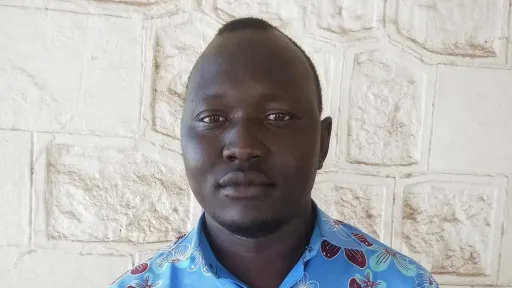By Charles Mgbolu
Rhinoceros, or Rhinos for short, are gentle giants, literally! They are the second-largest land mammals after the elephant and enjoy a vegetarian diet.
At night, their dull, sleepy eyes look contemplatively on as they slowly chew mouthfuls of luscious grass while standing on very thick, muscular limbs under the forest's full moon.
Then their reverie is suddenly and violently broken apart as they come under attack.
Poachers hack away at their horns, leaving the rhino to bleed to death very painfully and slowly.
The horn is mostly used in traditional medicine to cure headaches, fever, food poisoning, and even snake bites.
Rhino horns weigh on average 1.5–3.0 kilogrammes, with the white rhino having the heaviest front horn, which on average weighs 4.0 kilogrammes.
''South Africa has been the country hit hardest by poaching criminals, with more than 1,000 rhinos killed each year between 2013 and 2017,'' Save the Rhyno, a wildlife protection agency says.
According to the World Wildlife Fund, rhinos are all under threat, but three species—black, Javan, and Sumatran—are already listed as critically endangered.
South Africa is home to nearly half of the critically endangered black rhino population on the African continent and to the world's largest population of near-threatened white rhinos.
According to the World Wildlife Fund, the poachers are heavily armed and are known to engage in gun battles with park and anti-poaching security agents, often fighting to the death.
Since 2008, there has been a dramatic increase in the incidence of poaching in South Africa, and in the first three months of 2012, over 100 Rhino were killed with their horns harvested despite increased anti-poaching efforts.
The demand for Rhino horn mainly in Asia is massive, with it costing over $65,000 a kilogramme on the black market, making it pricier than diamonds, gold, and cocaine.
But like a skilled swimmer kicking frantically to keep his head above water, South African anti-poaching agents are fighting back.
South Africa announced that the number of rhinos killed for their horns in the country decreased in the first six months of 2023 as authorities increased efforts to tackle poaching of the endangered animals.
Between January 1 and June 30, 2023, 231 rhinos were killed in South Africa for their horns, 28 fewer than in the same period last year, South Africa's environment ministry said.
The ministry said joint efforts involving law enforcement agencies, customs officials, and private security had led to the conviction of poachers, but continued demand for the horns meant the threat to the rhino population persisted.
Rhino poaching often involves international criminal syndicates that rely on the help of local poachers.
Increased surveillance and de-horning programmes in the famous Kruger National Park drove poachers last year to turn their focus to provincial parks and private reserves.
That trend has continued in 2023, the ministry said, with 143 rhinos killed in the KwaZulu-Natal province and 46 in private reserves.
The government said it has set up tactical centres in addition to increasing services provided to rangers in healthcare, training, and counselling to discourage them from colluding with criminal gangs.
“This strategy aims to break the illicit value chain of wildlife trafficking in South Africa and beyond its borders. It represents a commitment by government to direct law enforcement ability and effort and mobilize society support to address the threat wildlife tracking poses to national security and the country’s rich biodiversity,” said Forestry, Fisheries and the Environment Minister, Ms Barbara Creecy.
South African authorities use helicopters to make daily flights over the reserve and alert the ground crews to suspicious vehicles and poaching parties. This means that the ground patrols are better able to apprehend the poachers.
























